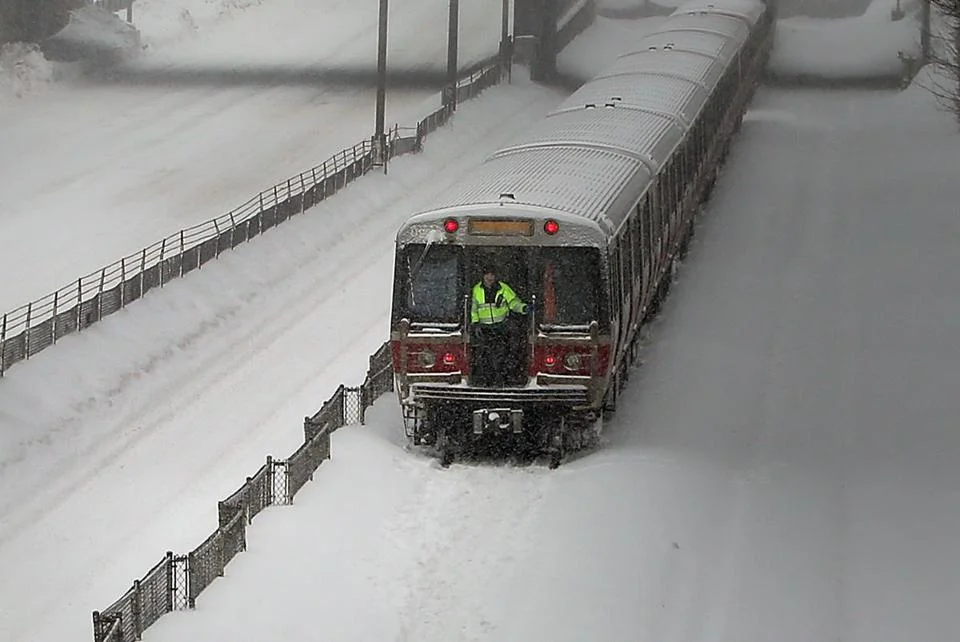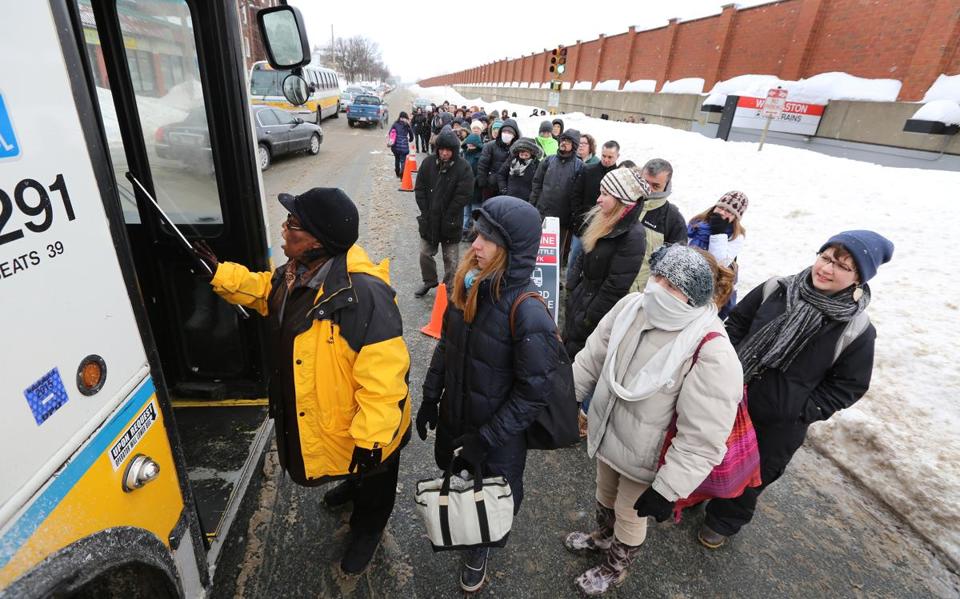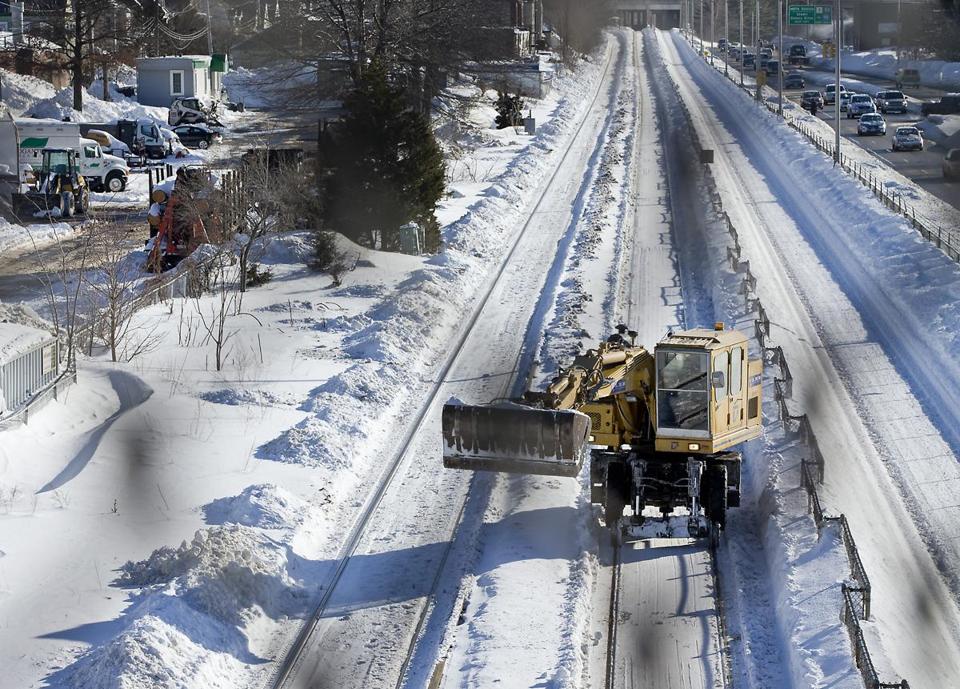
Media Statement: Orange Line Shutdown/Building A Better T 2022
The Orange Line is an essential part of the MBTA system; it carries over 100,000 riders a day. Today’s announcement of a 30-day shutdown is a dramatic example of the urgency of improving service on the subway system.
BOSTON, August 3, 2022 — The Orange Line is an essential part of the MBTA system; it carries over 100,000 riders a day. Today’s announcement of a 30-day shutdown is a dramatic example of the urgency of improving service on the subway system. Going forward, the MBTA must commit to giving riders more notice. The short notice of this announcement shows a lack of respect for riders. The quality of the T’s communications to riders throughout this effort, as well as the quality of its mitigation efforts, will be major tests for the agency. As the MBTA plans to shut down this critical piece of transportation infrastructure on short notice for a month, we need the Authority, municipalities, and other partners to take an all-hands-on-deck approach and coordinate efforts to deliver effective and usable transportation alternatives for 100,000 T riders who will be disrupted by this initiative.
We are concerned that replacement shuttle buses have not functioned well during past diversions. Too often they were stuck in traffic, hopelessly delayed, and woefully insufficient to replace rail transit service. The MBTA and affected municipalities must act quickly to establish and enforce busways and protected bikeways along the routes used by shuttle buses and nearby existing surface transit routes that will receive diverted passengers, such as the 39 bus and the E Branch of the Green Line. This is an opportunity to show that quick-build bus lanes are feasible and can make a meaningful impact on travel times. To reduce costs from installation and removal, these lanes should be operational and enforced 24/7 for the duration of the shutdown. We urge careful coordination with municipal partners like BTD and BPD, as well as the MBTA Transit Police to ensure reliable service.
We’re pleased to hear that the MBTA will have commuter rail trains stop at Orange Line stations along the corridor including additional trains at Oak Grove and Forest Hills. Fares from these stations should be waived for the duration of the diversion to ensure riders without a CharlieCard can access the service. Service should also be increased to stations along the route of the 34 Bus, such as Readville and Hyde Park. Many riders of the 34 transfer to Orange Line service at Forest Hills, and improved CR service to Southwest Boston is crucial to reducing pressure on the shuttle service. The T should also reduce fares on all Commuter Rail lines during the diversion to mitigate the increase in traffic caused by Orange Line riders switching to vehicles. Additionally, the MBTA should reassign Orange Line dispatchers to boost service on the Red and Blue lines, as well as boost service levels and capacity on the Green Line.
Finally, the MBTA needs to restore rider confidence by clearly communicating the benefits of this shutdown. Riders deserve a firm commitment from the MBTA that Orange Line service will significantly improve after this unprecedented diversion. The T must demonstrate that it can accomplish this shutdown within the strict 30-day period, and that it has in place strong oversight controls that were lacking during the recent Blue Line shutdown experience. Riders have put up with years-long slow zones, teething problems with new vehicles, and diversions with no appreciable impact on service. The MBTA must clearly communicate the benefits of this shutdown to riders and unveil a line with better travel times, more reliable service, and improved rider experience.
For media inquiries, please e-mail media@transitmatters.org.
###
An Emergency Transportation Plan to Fix Boston's Transit Crisis
Yesterday we learned that due to decades of neglect the MBTA will need at least 30 days to restore service to the normal level of delays, signal problems and disabled trains we're used to. While there is plenty of blame to go around, right now we must focus on the current emergency.
Yesterday we learned that due to decades of neglect the MBTA will need at least 30 days to restore service to the normal level of delays, signal problems and disabled trains we're used to. While there is plenty of blame to go around, right now we must focus on the current emergency.




We must act quickly to implement a temporary transit network that would people to resume their lives before the state's economy collapses and half the city's population is out of work. Mayor Walsh and MBTA General Manager Beverly Scott should seek help from cities and transit agencies who have experience with natural disasters. With bold political leadership and around 1,000 buses from across the northeast we can put an emergency transportation plan into action.
For guidance we should look to MTA New York City Transit, which in 2012 implemented emergency "bus bridges" connecting Brooklyn and Manhattan two days after Hurricane Sandy knocked out all subway service in the city's core (photos). The city used simple cones to create dedicated bus lanes along the shuttle route and police officers to enforce the lanes and keep over 200 buses moving on each route. MTA also ran a long-term shuttle route to replace the A line in Queens and a year earlier replaced suspended commuter rail service after Hurricane Irene.
Here and now, a network of emergency shuttle bus routes must be created based roughly on known travel patterns. Bus routes would not exactly mimic subway corridors but they would get you into the city's core where you can walk or use what's left of the T. Some routes would use dedicated bus lanes and receive priority over all other traffic, with police enforcement, while other corridors would be open only to buses. For all of the issues with bus service, the MBTA does a great job running shuttle bus links such as Harvard-Alewife and Lechmere-North Station when things are planned in advance.
Cars carrying fewer than 3 occupants would be prohibited from entering the city or using major highways inside Route 128. Slug lanes would allow those who must drive from suburban areas to pickup additional passengers before continuing on. Large parking lots along I-495 and Route 128 can be turned into park-and-ride lots with bus shuttles operating in dedicated bus lanes on all major highways.
Bikes must be part of the solution. It is certainly cold outside but desperate times call for desperate measures. Better to ride 3 miles in the cold than wait for a bus in the cold for the same 15 minutes, and every 50 bikes represents one more bus available elsewhere. Designating corridors like Washington St, Massachusetts Ave, Huntington St and Commonwealth Ave for buses and bicycles only would enable reasonably fast limited-stop bus service while giving people people a safe place to ride. Secure bicycle parking tents can be setup in several downtown locations and an emergency ordinance could require most office buildings to allow bikes inside until full subway service resumes.
Walking should be encouraged whenever possible in order to minimize stress on the transit system. Bostonians have not experienced a transit strike in recent decades but experience from other cities shows people will gladly walk a few miles if they can. Currently our sidewalks are a treacherous mix of snow and ice, so vehicle lanes can be converted to pedestrian lanes until sidewalks are clear, with some key roads open to buses and pedestrians only.
Some of these measures may sound extreme, but desperate times call for desperate measures, and I believe even the harshest critics of transit would be surprised by how well the city would function if they would just allow a demonstration.
At the very least, this plan would prevent the total collapse of the region and it is our chance to show definitively that a fast, frequent and comprehensive transit network is invaluable to the entire region. Eventually we'll wonder how we ever lived without one.
Mixed Feelings About Longfellow Reconstruction Process
[youtube=http://www.youtube.com/watch?v=VQsyPClwVj8] Tuesday evening, MassDOT hosted an informational meeting at Shriners Hospital as part of its community outreach to provide details on the upcoming Longfellow Bridge reconstruction. Plans were initially introduced in February and MassDOT is working to ensure that the public is well aware of the disruptions for the next three years that will restore a regional landmark. Not everyone walked away happy from the meeting though, especially car-dependent locals and advocates of the cycling community.
The Longfellow Bridge is the only bridge in Massachusetts that carries cars, trains, and pedestrians across the Charles River and one of the oldest in the Commonwealth. Opened on my birthday 107 years ago, 3 August 1906, the bridge has been neglected for nearly a century as many of the Commonwealth's other bridges. It's a critical link in the region's transport network, carrying over 28 thousand autos each day and over three times that in Red Line passengers in addition to scores of pedestrians and cyclists who enjoy the picturesque views of Boston into Charles Circle.
The last time heavy work was done on the bridge was in 1959 and that rehab was only supposed to last 50 years. This reconstruction, scheduled to be completed in 2016 at the cost of over $255 million, should last 75 years and will bring some much-needed improvements to modernise the bridge, including wider pedestrian paths and wide, buffered bike lanes on both sides of the bridge. Sedimentation basins will even be installed at the ends of the bridge to catch and filter the rain runoff from the bridge, cleaning the oil-slicked water before it gets dumped into the Charles.
A significant amount of attention will be paid to the historical elements of the bridge, requiring the careful disassembly of various decorative bridge components, from railings to cladding, and hand-restoring them off-site. The masonry of the bridge's iconic towers will also be removed block-by-block for cleaning and restoration.
A new pedestrian bridge will also be installed next to the bridge to replace the existing bridge that spans over Storrow Drive to provide wheelchair accessibility from Charles Circle to the Esplanade. The bridge will be built adjacent the existing pedestrian bridge and will open in 2015.
But what about the bikes?...
Restoration is being handled by the joint venture of White, Skanska, and Consigli. All three are high profile engineering and construction contractors, but are any of them up to the task of managing pedestrian and bicycle infrastructure? White has built much of Boston's significant infrastructure projects, but most of those projects have been auto-oriented or large transit projects and none appear to have as much mode mixing as that at the approaches of the Longfellow Bridge. Tetratech will be providing traffic design for the project, but no experts in pedestrian or bicycle infrastructure design have been brought onto the project.
Bicycle advocates from MassBike and LivableStreets brought into question the approaches at the end of the bridge during construction for pedestrians and bikes and when those designs would be available for public comment. The engineers from the joint venture noted that during the final phase at 75% of design completion, there would be an opportunity for public comment, but this was only for the final bridge approach design. The group claimed interim plans for the bridge approaches already take into account public concerns about bike and pedestrian infrastructure, but they did not actually present how the approaches will look during each phase of construction, which was the focus of this informational meeting. '[The interim approaches] will be reviewed by public safety officials', said one of the presenters who later clarified those would include traffic engineers, fire department officials , and police officials, but not there will not be any opportunity for public input before construction begins.
And the cars?...
Another incendiary point of the evening was the fact that all Cambridge-bound traffic would be eliminated for all 3 years of construction. One Beacon Hill resident claimed the plan was 'incomprehensible', noting 'it’s a disaster lots of times just to get home' and further exclaiming it would significantly hinder her ability to leave the city, even with the planned detours over the adjacent Craigie Bridge. One alternate route was to direct traffic across the Harvard Bridge via Mass Ave to get to Cambridge, which as scoffed at by at least one attendee.
As a nation, we've been driving less month over month since 2004. Commissioner Thomas Tinlin of the Boston Transportation Department was there to assure her that traffic shouldn’t be as severe as she anticipates, considering the fact that stats barely flinched when one Cambridge-bound lane was closed on the bridge as a live test. Though not an official announcement, he suggested there was time before the actual bridge closure to do a live test of an entire Cambridge-bound bridge closure.
Through thick and thin, the trains will run (except for 25 weekends)
Despite auto lane closures and 25 planned weekend service diversions, the Red Line will still run in some shape or form. Dedicated bus lanes and an additional 20 buses purchased by MassHighway are planned to run during weekend service diversions per construction planning by the joint venture. Contrary to the plans noted by the Globe, the phasing appears to permit the weekend shuttles to run in both directions over the bridge instead of only one direction with the other routed over the congested Craigie Bridge. It's still up to the MBTA to determine how they'll manage the weekend service diversions and whether Red Line trains will run between Kendall and Park or Kendall and Charles-MGH.
There is a point where trains can cross over between Park and Charles-MGH so the latter is more likely since Charles would offer operations to run more like the terminal at Alewife, where trains can enter the station on either side and turn around and cross over to the correct track before reaching the next station. Let's hope for the shuttle to go between Kendall and Charles-MGH since past shuttles between Kendall and Park have been nightmares due to the number of lights and awkward routing between Charles-MGH and Park for shuttle busses.
Unfortunately for one gentleman who has lived adjacent Charles Circle for over 40 years, there's no relief in sight, including the 2 years of various phases where the Red Line will be running on temporary 'shoofly tracks' right on the road itself. The new bridge construction will not include any noise abatement walls along the tracks, so the people who live at Charles Circle won't get any relief, at least for the next 75 years.
Tuesday evening was one of the last meetings held by MassDOT before rehabilitation begins on the bridge this June.
Categories
- Children (1)
- Diversions (1)
- Olympics (1)
- MAPC (2)
- Red–Blue Connector (2)
- Urban Design (3)
- Bus (4)
- Fares (4)
- Late Night Service (4)
- MBTA ROC (4)
- Silver Line (4)
- Snow (5)
- Blue Line (8)
- Emergency (8)
- Orange Line (8)
- Public Comment (8)
- Maintenance (9)
- Operations (9)
- Signage (9)
- Fare Collection (10)
- Labs (11)
- Safety (11)
- Planning (12)
- Communication (14)
- MBCR (14)
- MassDOT (14)
- Green Line (16)
- History & Culture (16)
- Red Line (18)
- MBTA Bus (21)
- Commuter Rail (24)
- Advocacy (26)
- Capital Construction (28)
- Politics (30)
- Podcast (35)
- News (38)
- Media (40)
- Funding (42)
- Statements (50)
- MBTA (57)


